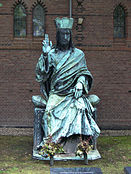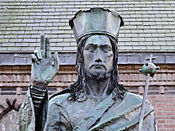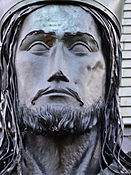Draft:Christ the King (Groningen)
 | Draft article not currently submitted for review.
This is a draft Articles for creation (AfC) submission. It is not currently pending review. While there are no deadlines, abandoned drafts may be deleted after six months. To edit the draft click on the "Edit" tab at the top of the window. To be accepted, a draft should:
It is strongly discouraged to write about yourself, your business or employer. If you do so, you must declare it. Where to get help
How to improve a draft
You can also browse Wikipedia:Featured articles and Wikipedia:Good articles to find examples of Wikipedia's best writing on topics similar to your proposed article. Improving your odds of a speedy review To improve your odds of a faster review, tag your draft with relevant WikiProject tags using the button below. This will let reviewers know a new draft has been submitted in their area of interest. For instance, if you wrote about a female astronomer, you would want to add the Biography, Astronomy, and Women scientists tags. Editor resources
Last edited by Dclemens1971 (talk | contribs) 4 months ago. (Update) |
| Christus Koning | |
|---|---|
 | |
| Artist | Jan Eloy and Leo Brom |
| Year | 1936 |
| Medium | Copper |
| Dimensions | 300 cm (120 in) |
| Location | Groningen, Hereweg |
Christus Koning is a sculpture by Jan Eloy and his brother Leo Brom. It is located at the R.K. Cemetery on Hereweg in the city of Groningen.
Background
[edit]In 1936, the St. Martinus Parish in Groningen celebrated its 100th anniversary. The Brom brothers were commissioned to create a statue, which was initially placed near the St. Martinus Church at Academy Square in the city.[1] The unveiling took place on October 11, 1936.
In the late 1960s, then pastor Braakhuis decided to remove the statue. Its stern appearance no longer fit with the surroundings, and it had become a target for vandalism, particularly during initiation rituals of Groningen students.[2] The statue was removed from its pedestal on September 1, 1967. It was initially slated for destruction but was saved by the intervention of the curator of the Archiepiscopal Museum in Utrecht and stored in a cupboard behind the font in the church. On the initiative of the cemetery overseer, Mr. Wilkens, it was later placed on the north side of the chapel at the cemetery. Two bishops of Groningen, Petrus Nierman and Bernard Möller, are buried at the base of the statue. The Martinus Church was demolished in 1982, and the University Library was opened at the site in 1987.
Description
[edit]The statue depicts a seated Christ the King, crowned and draped in robes, with his right hand raised in blessing. The three-meter-high statue is made of copper with an artificial patina. It was originally placed on a hardstone pedestal at the north facade of the Martinus Church and was initially set on the ground at the cemetery.
During the Second World War, the statue was hit by eight bullet holes, including one in the left hand. During its relocation to the cemetery, the scepter that Christ held in his left hand was stolen.
In 2013, the statue was restored; Christ received a new scepter, and the statue was placed on a new pedestal. The bullet holes from 1944 remain visible.
Gallery
[edit]-
The statue before restoration
-
The statue after restoration
-
Detail
-
Detail
References
[edit]- ^ "Christus Koning", Kunst op Straat in Groningen, Kunstpunt Groningen.
- ^ Vinther L. (1982), "Het beeld van Christus Koning", in Groningen Toen. Groningen: Drukkerij Ebel Noorman B.V.
53°12′13.91″N 6°34′23.55″E / 53.2038639°N 6.5732083°E




